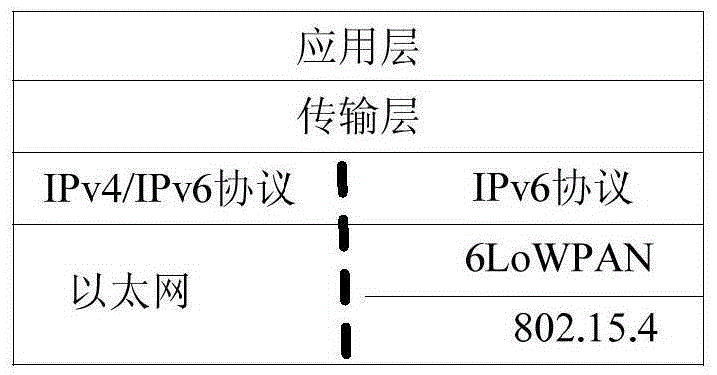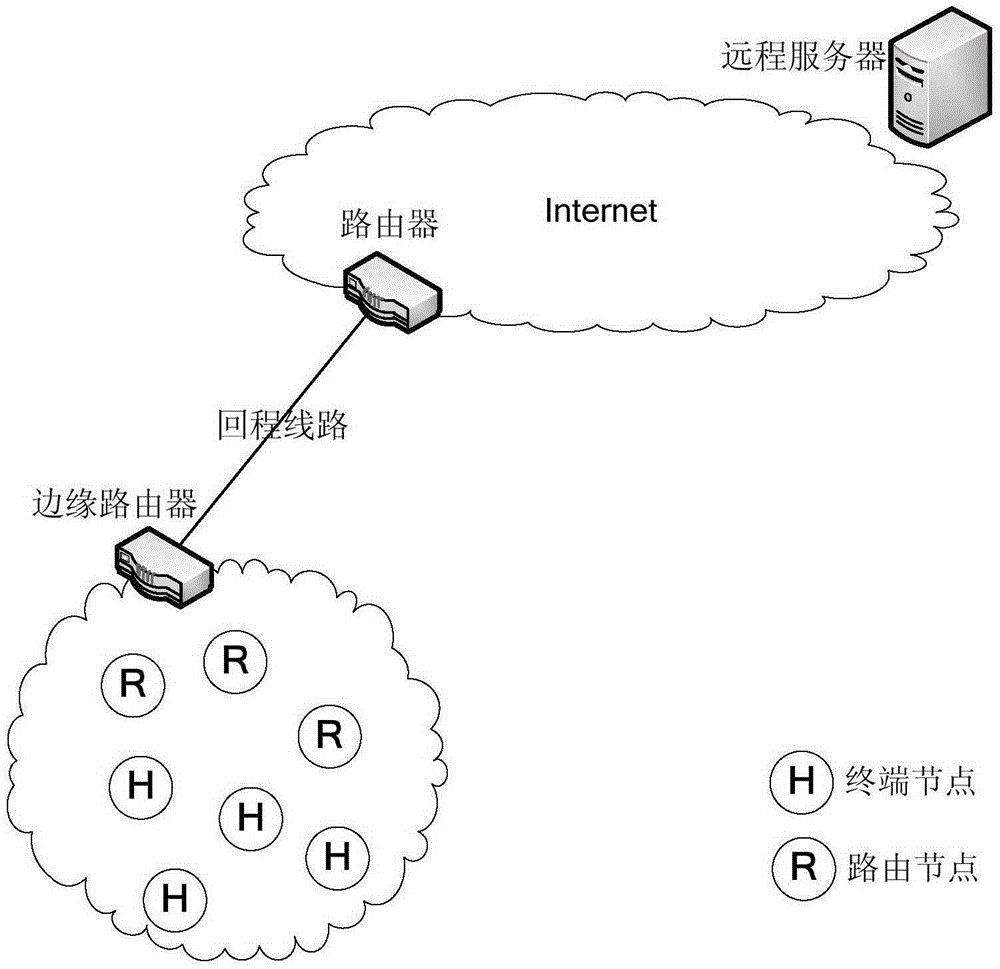Intelligent 6LoWPAN boundary route implementation method and boundary router
A router and boundary technology, applied in digital transmission systems, electrical components, transmission systems, etc., to meet the needs of modular design, good independence, and wide application space.
- Summary
- Abstract
- Description
- Claims
- Application Information
AI Technical Summary
Problems solved by technology
Method used
Image
Examples
Embodiment 1
[0035] This embodiment mainly describes in detail the implementation method of intelligent 6LoWPAN border routing, as Figure 4 shown, including:
[0036] Step S401: Use the LAN port to carry the 6LoWPAN radio frequency network, as the 6LoWPAN root node itself, initiate a networking command, and establish a network with the 6LoWPAN terminal node;
[0037] The local LAN port of the border router carries the 6LoWPAN radio frequency network and is responsible for managing the local network (networking, IP allocation, local routing, etc.). The physical and link protocols adopt the standard IEEE802.15.4 protocol, and the network layer adopts the standard IPv6 protocol. The networking process initiated by it is as follows: Figure 5 shown. The networking process is as follows:
[0038] The construction process of the local network starts from the root node or border router (LoWPAN Border Router, LBR). The root node first uses DIO to broadcast information about the graph (path); ...
Embodiment 2
[0047] This embodiment specifically describes step S403 in Embodiment 1, as Figure 6 shown, including:
[0048] Step S601: when the remote server is an IPv4 server, execute step S603; when the remote server is an IPv6 server, execute step S602;
[0049] Step S602: determine whether the Internet protocol carried by the local WAN port connected to the remote IPv6 server is an IPv4 protocol, if yes, execute step S605, if not, execute step S606;
[0050] Step S603: determine whether the Internet protocol carried by the local WAN port connected to the remote IPv4 server is an IPv4 protocol, if yes, execute step S604, if not, execute step S606;
[0051] Step S604: start the NAT64 conversion of IPv4 and IPv6 protocols, and go to step S607;
[0052] NAT64 is a stateful network address and protocol conversion technology, which generally only supports access to network resources on the IPv4 side through connections initiated by users on the IPv6 network side. However, NAT64 also sup...
Embodiment 3
[0060] This embodiment mainly describes the process of the remote server accessing the local 6LoWPAN terminal node in step S404 in the first embodiment, which is the reverse process of the local 6LoWPAN terminal node accessing the remote server in the second embodiment, as Figure 7 shown, including:
[0061] Step S701: when the remote server is an IPv4 server, execute step S702, and when the remote server is an IPv6 server, execute step S703;
[0062] Step S702: Determine whether the Internet protocol carried by the local WAN port connected to the IPv4 server is an IPv4 protocol, if yes, perform step S704, and if not, perform step S706;
[0063] Step S703: Determine whether the Internet protocol carried by the local WAN port connected to the IPv6 server is an IPv4 protocol, if yes, perform step S708, and if not, perform step S710;
[0064] Step S704: Encapsulate the IP packet into an IPv4 packet at the remote server, and send it to the border router, and execute step S705; ...
PUM
 Login to View More
Login to View More Abstract
Description
Claims
Application Information
 Login to View More
Login to View More - R&D
- Intellectual Property
- Life Sciences
- Materials
- Tech Scout
- Unparalleled Data Quality
- Higher Quality Content
- 60% Fewer Hallucinations
Browse by: Latest US Patents, China's latest patents, Technical Efficacy Thesaurus, Application Domain, Technology Topic, Popular Technical Reports.
© 2025 PatSnap. All rights reserved.Legal|Privacy policy|Modern Slavery Act Transparency Statement|Sitemap|About US| Contact US: help@patsnap.com



